One of my favourite blockbuster movies in 2018 was the Marvel Comics superhero film, The Black Panther, starring Chadwick Boseman! In the movie, there were many fascinating African tribes who were dressed in different costumes that included lip plates, jewelry and armed weapons. This movie beautifully showcased the beauty and diversity of African tribes to the rest of the world.
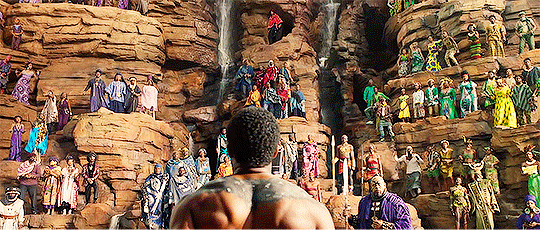
Black Panther Wakanda African Tribes
Image from: https://aminoapps.com/c/k-drama/page/blog/pqfdvq42nbembetmpkpf2676xe/ER8s_Puxl4KXa1berlNZRdWwxZ3l8rz
You probably have already read my previous article “16 Lessons From Ethiopia“. After watching the Black Panther movie, I was inspired to do some research on the tribes featured in the movie. With the research information I have gathered, I embarked on a solo journey to hunt for these tribes. In this article, I am going to unveil the beauty and uniqueness of these tribes, as well as their daily life. 🙂
Also don’t miss out the article: 16 Life Lessons From Ethiopia
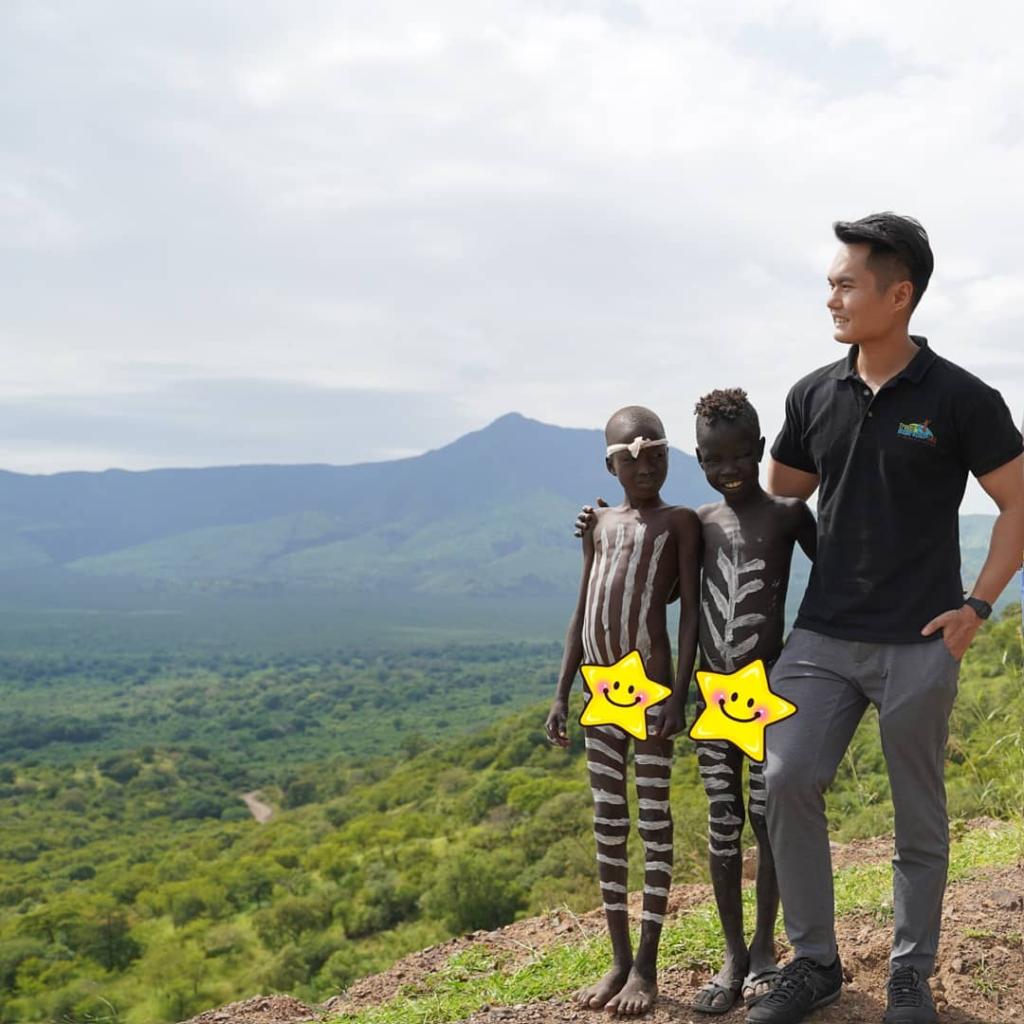
With the Mursi Tribe Children In Omo Valley Ethiopia
Visiting these tribes isn’t a straight forward journey, I needed to traverse through the tough but interesting terrains in the Southern Region of Ethiopia. It was a bumpy 3 days ride by car on a dirt path and roads passing by villagers, children, tribal cowherds, shepherds, or donkey-herds (not sure if that is a real term for donkey handlers..haha). And yes, the road is filled with either animals or children. Nothing like the great highways in the developed world. You will also need to stay in towns where the accommodations is very basic, which in my opinion is acceptable and comfortable enough for me. Using the town as a “base camp” to subsequently take day trips by car, with boat ride and trekking to reach the tribes scattered in Omo Valley region. This was an exciting adventure and journey, awaits!

Omo Valley Ethiopia
Here are some of the fascinating tribes I have visited.
#1 The Mursi Tribe
Location
The Mursi tribe in my opinion is the toughest to get to, located in the most isolated region of the country – in Southern Ethiopia near the border with South Sudan. An estimated of 10,000 tribe members of this beautiful, sedentary tribe reside in the surrounding mountains between Omo River and Mago National Park.
Getting there, I had to travel 3 days by car on the dirt path to the town of Jinka, and then travel a day across the Mago National Park, followed by a treacherous way high up the mountains on a rocky road to locate the Mursi tribe people. If you have motion sickness, this trip may be tough for you. But seeing the Mursi people was a life time experience for me and so it totally worth it.

The roads were too rough for our car, poor car survived the treacherous road and dirt path for a week! Kudos
Tribe Special Symbolic
Remember the village chief with the lip plate in their lip from the movie “Black Panther”? This is a key feature of the Mursi women. The Mursi women wear clay or wooden plates in their lower lips or earlobes. This is part of their traditional rites of passages for educational and disciplinary purposes. The Mursi women start wearing these plates when they are around 15 to 16 years old, when the girl’s lower lip is cut by her mother. The opening of the wound is held open by a wooden plug until it heals.

Looking at this Mursi Lady with Lip Plate, my reaction was OUCH!
It will be up to the individual Mursi young lady to decide how big to stretch the lip apart, by inserting progressively larger plates over the years. It was believed that the bigger the plate, the more desirable and prized it will be for the lady’s value in marriage.

Mursi Tribe lady with Lip plate feeding her baby, totally fascinated with the fruits on top of her head!
These traditions have been passed down by generations and it was believed that the practice of cutting and stretching the lower lip originated as a deliberate disfigurement during the western colonization period to make the women and girls less attractive to slave traders. A painful reminder of the terrible slave trade that plague the African history.

Mursi Tribe lady with baby exiting their hut, truly fascinating decorations.
Secret Weapon
Did you know that the Mursi tribe have a reputation for being one of the more aggressive African tribes (I can testify for it) and are famous for their stick fighting ceremony called the Mursi Donga Stick Fighting. The brutal stick fighting is a traditional fight that the Mursi men must follows to prove their masculinity and maturity. Definitely not a fun acting wrestling to watch!

Never underestimate the strength and power of the Mursi tribe people. They can get really aggressive especially when I was distributing to the children. Even adults were snatching things from me.
And the Mursi tribe men do carry rifles. I have no idea where they get their rifle and ammunition from, but to protect themselves from deadly animals and attacks from other tribes, the Mursi men have learned how to use a rifle for protection, hunting and survival in the mountains at a very young age. So, do not mess around with them!

Well, not messing around with them of course! The Mursi Tribe Men With Rifle!!! haha No joke.
Culture
The Mursi tribe people lived humbly in huts called Doris, that can accommodate several family members. The women in the tribe are responsible for building these simple homes. They rely heavily on cattle for meat and milk for their food intake. They also harvest maize, chick peas, and beans. Unfortunately, because of where they live, the Mursi people often face drought, which weakens their crops and cattle herds. 🙁
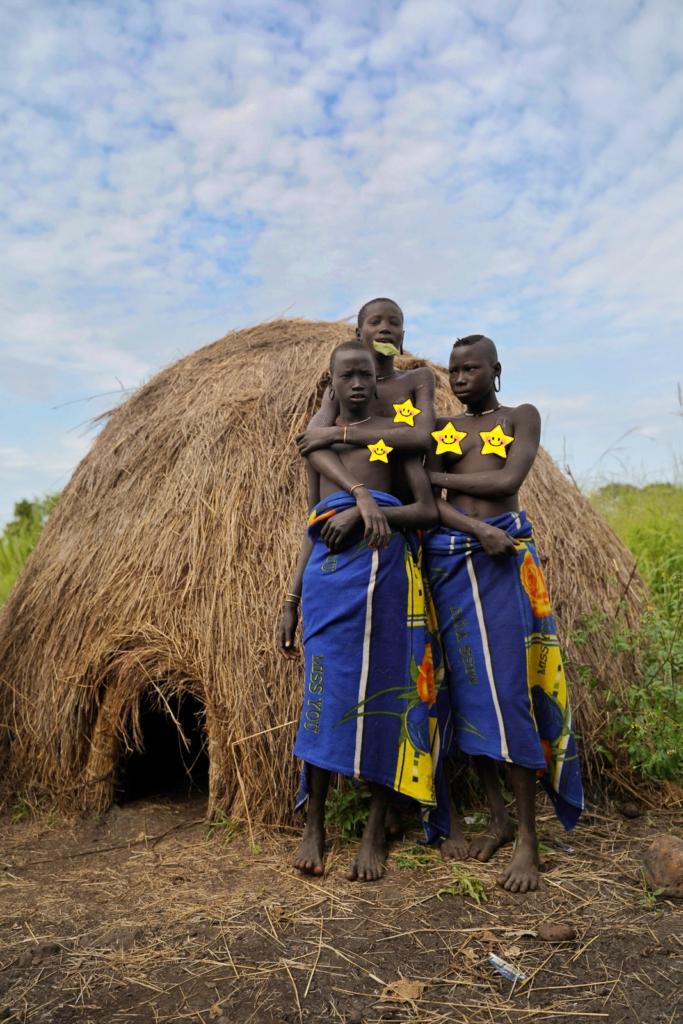
The Mursi tribe people are usually taller than other Ethiopian tribes or even people from the city. Somehow, they are eating at least one thing right to make them so tough and tall.
The Mursi tribe are also known for their elaborate body and facial paining, using body art as an expression of their social hierarchical class in the tribe. The colours, patterns and designs are used to designate position, for ritual or to ward off sickness, or even can be used to attract the opposite gender. Different designs for different events. Each design has a different meaning/reasoning and evokes different emotions and feelings.
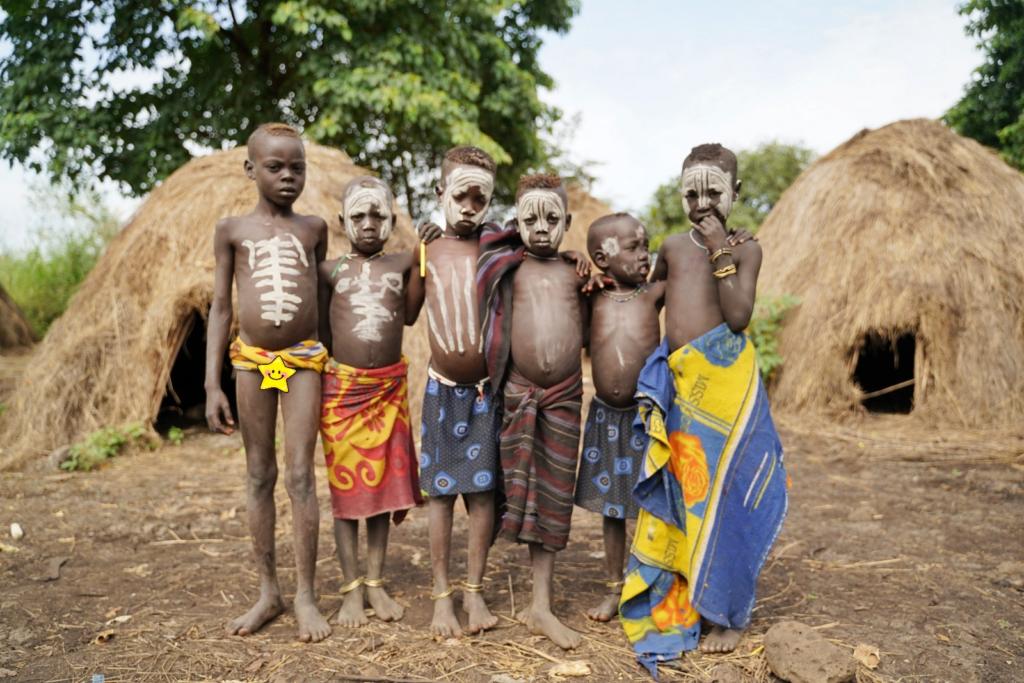
Children are warriors too. Mursi Tribe children with body paint.
#2 The Daasanach Tribe
Location
The Daasanach tribe is a semi-nomadic tribe with approximately 50,000 tribe people. They are found in the area stretching across Sudan and Kenya borders in Southern Ethiopia. They are the furthest tribe to visit in Ethiopia from the capital of Addis Ababa. Getting there, you will have to travel really down South, near the Kenya and Sudan border as well as close to the Northern part of Lake Turkana. Take a dugout canoes made from trunk of a gigantic tree to get across the river, then trek for a bit to reach their settlement.
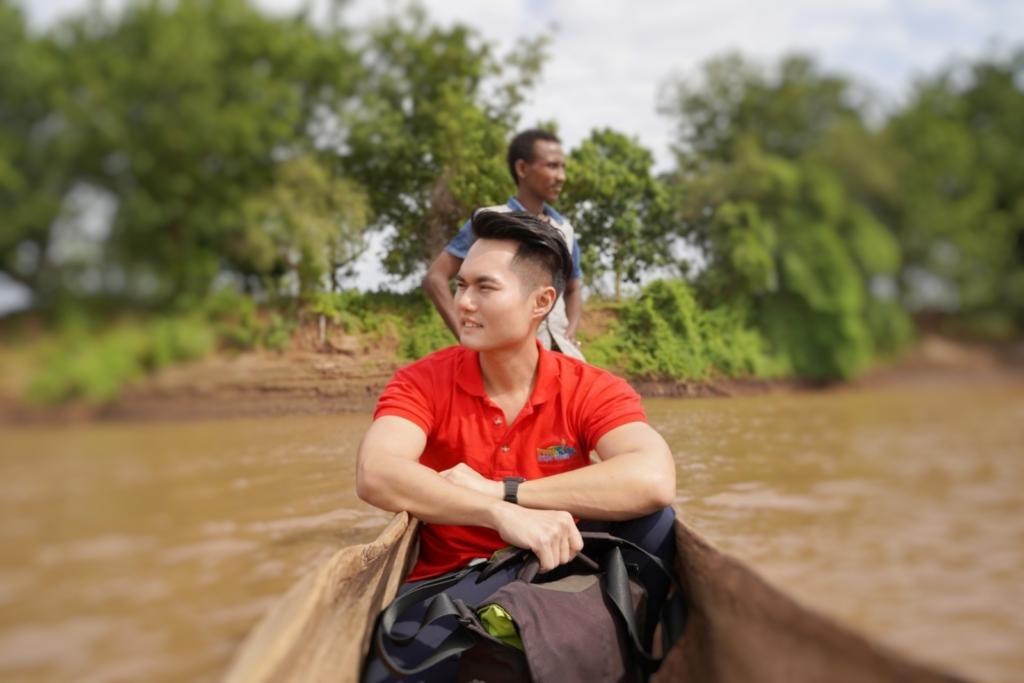
Crossing the river with dugout canoe, seriously there were far too many crocodiles in the river to make me do a proper smile. Also, I was highly doubtful about the dugout canoe.
In the past, the tribe was nomadic and roam freely depending on the weather and season, but in recent times the Daasanach tribe started to be dependent on agriculture. Like many tribes of the Omo Valley, like the Daasanach tribe depend on the annual flood cycle of the Omo River to nurture their crops.
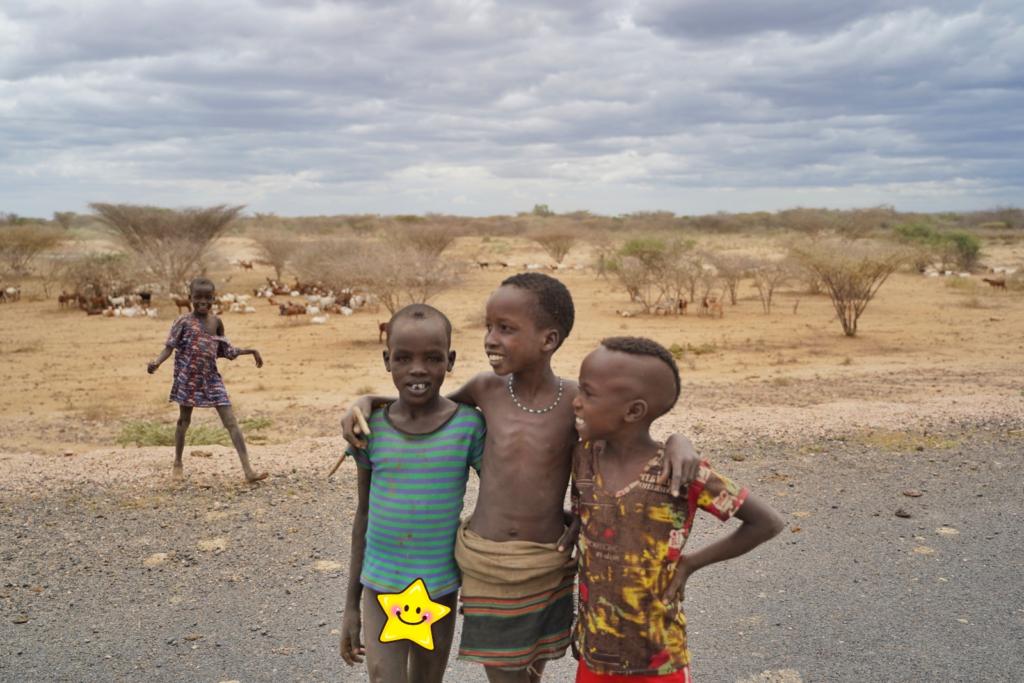
These beautiful children, never fails to brighten up my day! Thank you to the Daasanech tribe children!
One of the interesting thing about the Daasanech tribe is that they don’t politically belong to any of the countries (Ethiopia, Sudan, and Kenya), and prefer to be self-governed. They are the only ones who are able to move freely between the countries and the borders. How cool is that? haha
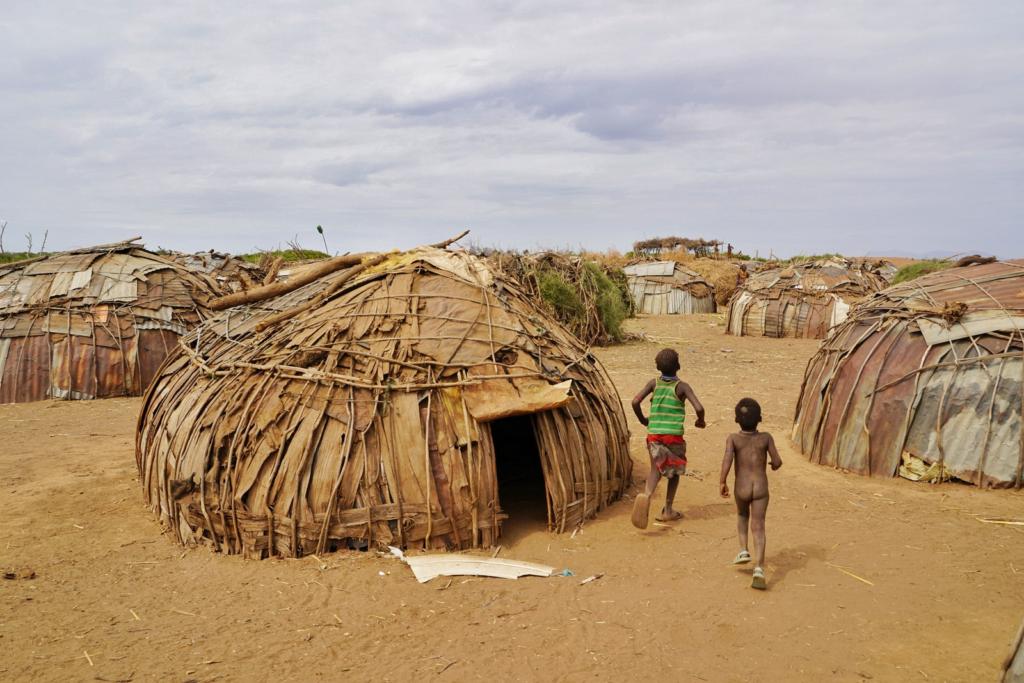
Daasanech tribe is nomadic, between Ethiopia, Kenya and Sudan. They basically are given free pass to stay around the 3 countries. How cool isn’t it?
Tribe Special Symbolic
The Daasanech tribe women dresses look fancy with long cow skin dresses and multicolored beaded necklaces. An interesting fashion trend amongst the Dassanach tribe people is their headgear. Especially the men, with a long feature and some multicolored beaded necklaces, the adults are generally tall and look strong.

Dassanech tribe man, usually very tall and strong. Thankfully, this man looks really kind to me.

Dassanech Tribe Man with his Head Gear and Necklace
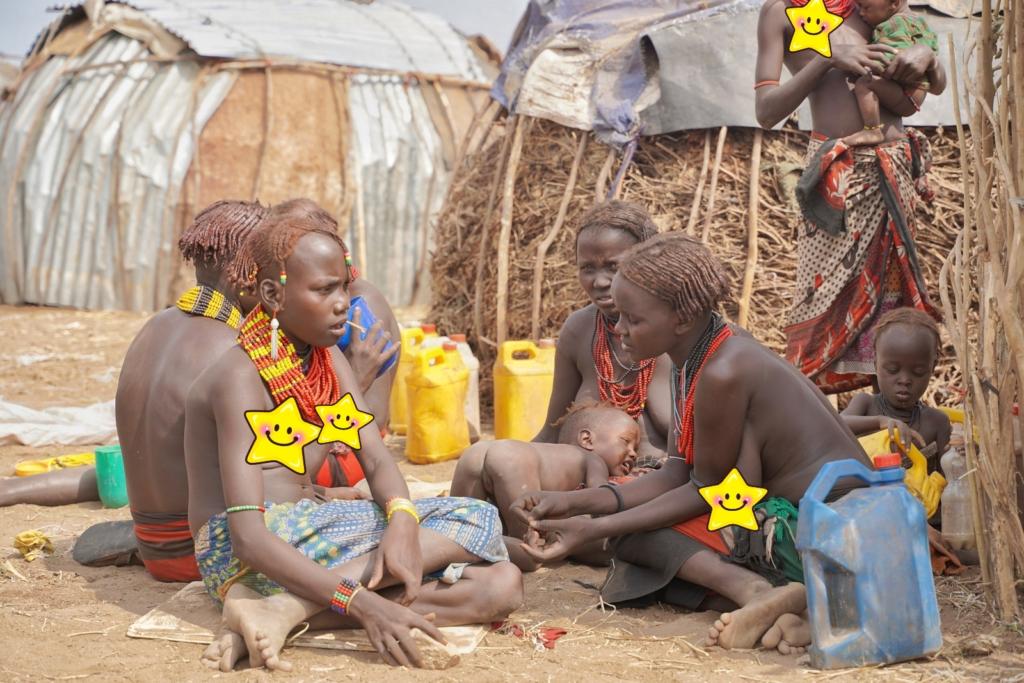
Dassanech tribe women with their necklaces and gears
The Dassanech tribe is one of the more innovative and “business” minded tribe that I have visited. They recycle items to produce hand-made craft and jewelries, decorations and try to sell them in their own “markets”. Many of these items are made from buckets of dried small flowers and branches, or with decorated shells, white feathers and bottlecaps collected from discarded coke or beer bottles.

Dassanech tribe market. (Your 5th Avenue, Orchard Road, Bond Street, Champs-Élysées etc…)

Dassanech tribe handicraft merchandise
Secret Weapon
The Daasanach men are known for their fighting prowess and are feared by many neighboring tribes. Raids are often conducted to obtain more cattle. The Daasanach warriors are also proud of the number of enemies they have killed, that is one tribe that definitely keep a kill count score.

You know when I said the Dassanech warriors, I am not referring to this Dassanech sleeping man with his crops and cattles! haha
Culture
Among all the tribes, I feel the Daasanech tribe people have the toughest life. Cattles are the most important livelihood for them. But over the years, their livestock are decreasing in numbers due to disease and drought, forcing many to hunt for crocodiles meat and fish in the river for survival. It is also interesting to note that cattles are also used in this tribe as a key status symbol, and those who have no cattle are looked down upon. This is a similar culture like their tribal cousins in Kenya – The Maasai Tribe. Read: A Humbling Experience In The Maasai Tribe!
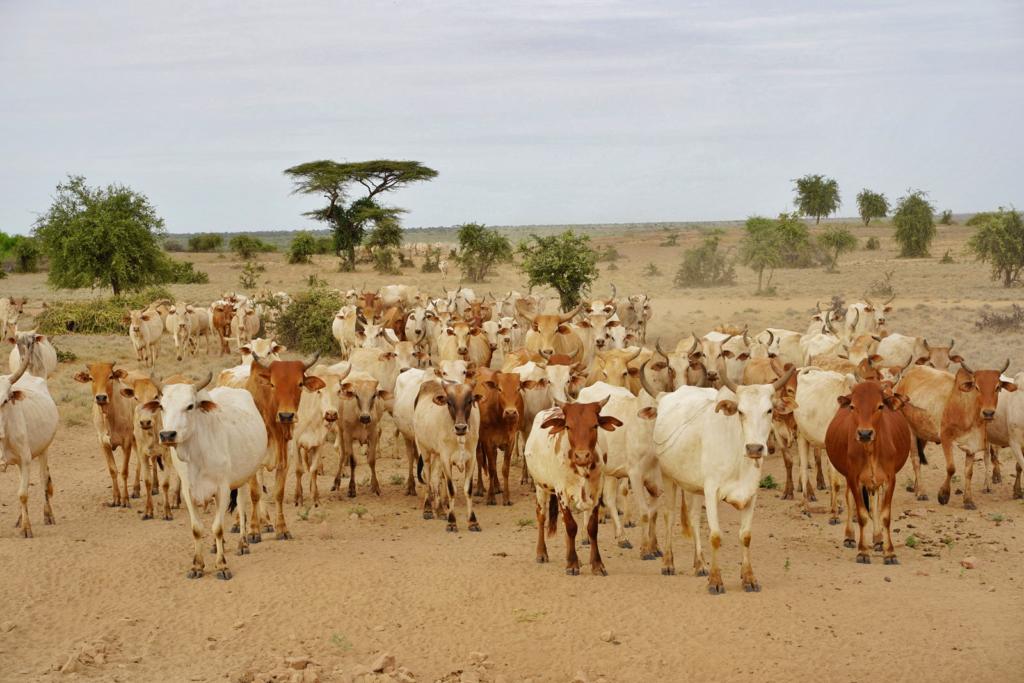
Daasanech tribe with cattle, obviously I got this shot because I was in their way.
Also all tribe members in the Daasanech tribe will have to strictly obey one traditional rite of passage – circumcision. This applies to both men and women before they can be consider as part of the Daasanech tribe.

Alternative to cattle, will be the goats, they were much friendlier than the cattle.
The Daasanach tribe people live in dome-shaped houses made from a frame of branches, covered with hides and woven boxes. Inside the huts, they have mats which lay on the floor for sleeping. These dome houses can fit in 13 to 15 people. In my opinion, their houses are seem stronger and bigger than the Mursi tribe.
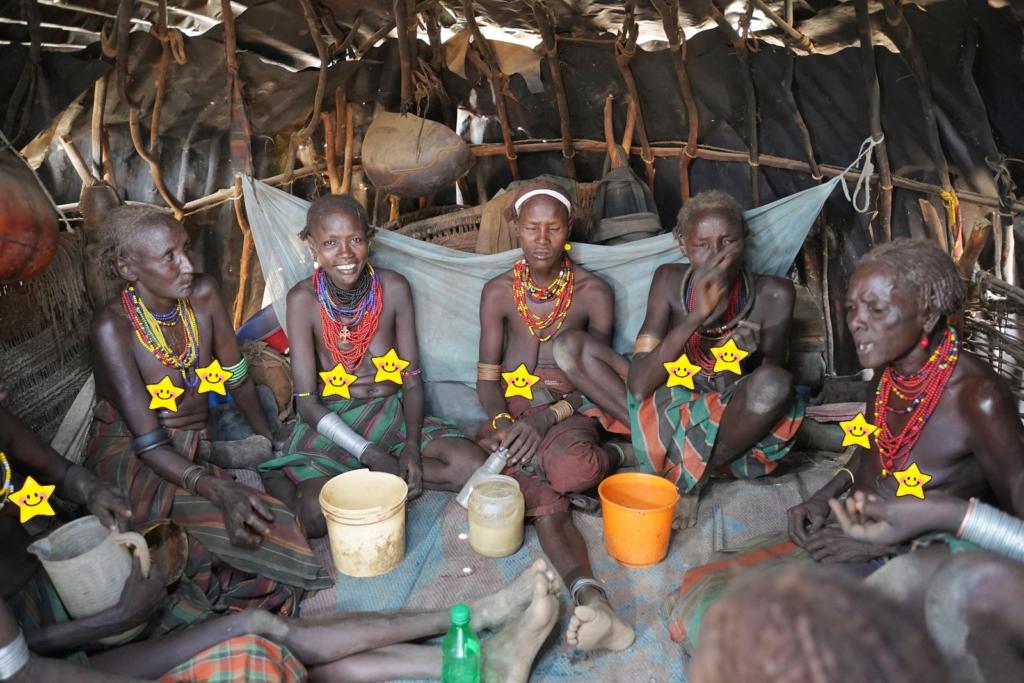
Dassanech women in their huts for celebrating a new born baby. A lady kept inviting me to join them. Neah, I may get a little uncomfortable.

The Daasanech tribe houses. How different from yours?
#3 The Hamer Tribe
Location
Approximately 20,000 to 25,000 Hamer tribe people are found in the Eastern part of Omo Valley where there are market towns like Turmi and Dimeka. Because of the more “fertile” land on the eastern side of Omo Valley, the Hamer tribe are more fortunate than the Mursi and the Daasanech tribe. But they are still subject to natural disasters like droughts and weather change. Similar to the other tribes, cattle is the main source of life and sign of wealth and status in the family. Collecting honey, hunting in the wild for antelope or boars are also other sources of food for the Hamer tribe.

The beautiful Hammer Tribe in deep Omo Valley, Ethiopia
Tribe Special Symbolic
The Hamer tribe women are well known for the practice of body adornment and wearing a multitude of colourful beads, similar to the Daasanech tribe women. They love to beautify themselves by wearing heavy polished iron jewelry, which looks very heavy to me, and cow’s skin leather dresses.

I was asking the lady on the left to wear her clothes properly for my shots. Obviously, that’s her fashion sense. I gotta bring a star down.
The Hamer tribe women are also well know for beautifying their hair with beads and dying them in ochre which produces a brownish colour. Ochre is a natural clay earth pigment which is a mixture of ferric oxide and varying amounts of clay and sand. It ranges in colour from yellow to deep orange or brown. Sadly, Ochre was recently discovered by the researchers to be the main reason for causing blindness in the Hamer tribe women. I understand from my guide that the government had tried persuading the Hamer women to stop this practice of dyeing their hair with ochre but it was ignored by the tribes.

The red dye on their hair is Ochre, which will cause blindness. 🙁
Secret Weapon
The Hamer tribe are known to be aggressive and tough people. I personally witnessed a Hamer tribe women throwing rocks at people who they deem as threatening and annoying. The Hamer tribe women are not to be messed around with.

Tough Hammer Tribe Woman, she was the one tossing stones at my camera. They believe camera will steal away their souls and decreases their life span.
In the market, vegetables are more expensive than meat as they are in short supply. When spinach arrives, the Hamer tribe women can be seen fighting hard to snatch a portion to buy for their family. Ironically, in this part of the world, meat is considered a cheaper choice than vegetables.

Expensive Spinach in Ethiopia, later, this little girl invited me to eat the Spinach. I just can’t do that. it meant so much for them.
Their handicrafts and markets are as colourful as their style! it displayed the talents of the Hamer Tribe people!

Hamer Tribe Market (This is your NTUC, Woolworth, Walmart, Tesco etc…)
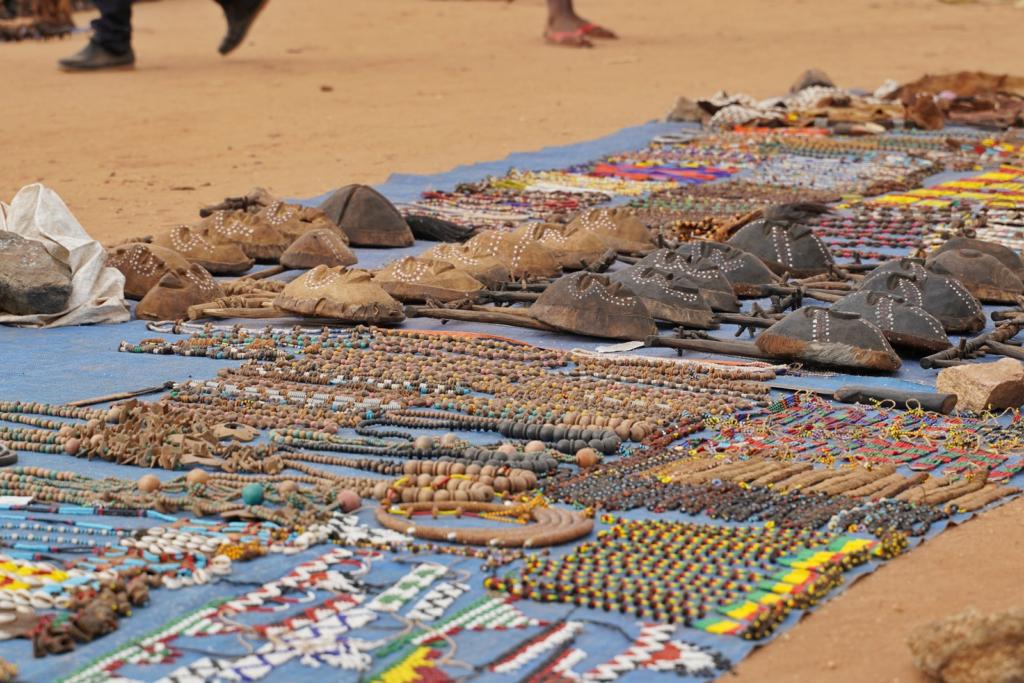
Hamer Tribe Market Merchandise! Here is their Hollywood where you find your Gucci, Prada, LV etc…

The Fascinating Hamer Tribe Handicraft
Culture
The Hamer men have a reputation of being amorous and cruel husbands when compared with their neighbouring tribes. They can marry as many women as they like within their own tribe, by paying the “dowry” with cattle and goats. As part of the marriage, the Hamer tribe women must submit to the rituals floggings, which leave painful deep scars. Sadly these are regarded within the tribe as proof of devotion and love to their husbands.
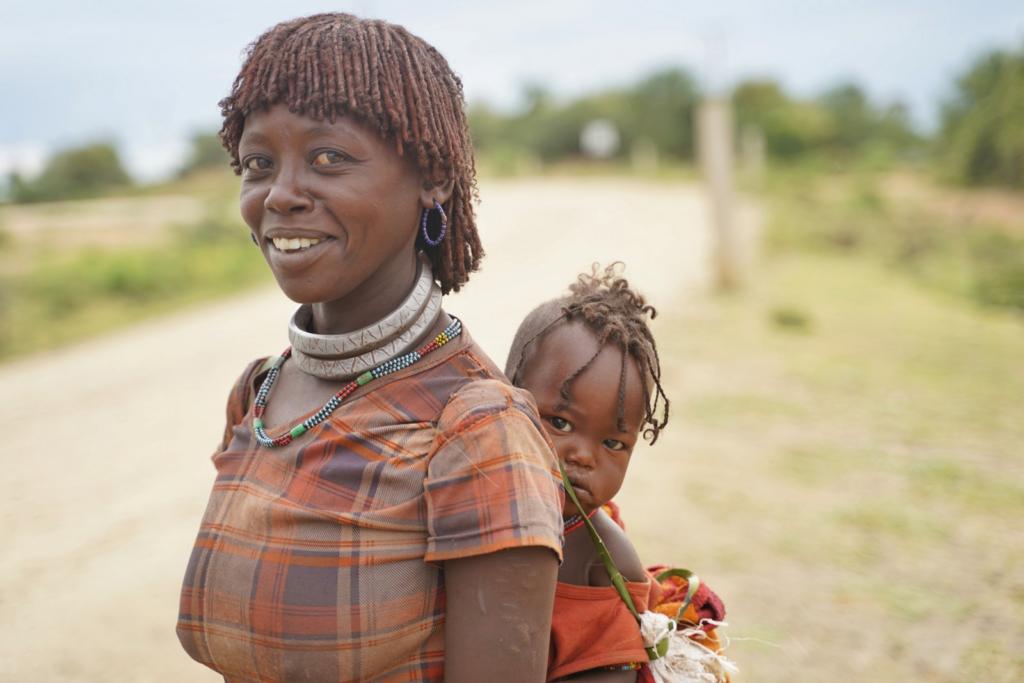
Pay attention to this mothers left arm, its a love scars to demonstrate her devotion to her husband.
If the husband passed away, the widow will have to marry one of the husband’s brother. It was said that this is part of their traditional and culture, for the women and children’s care and protection.
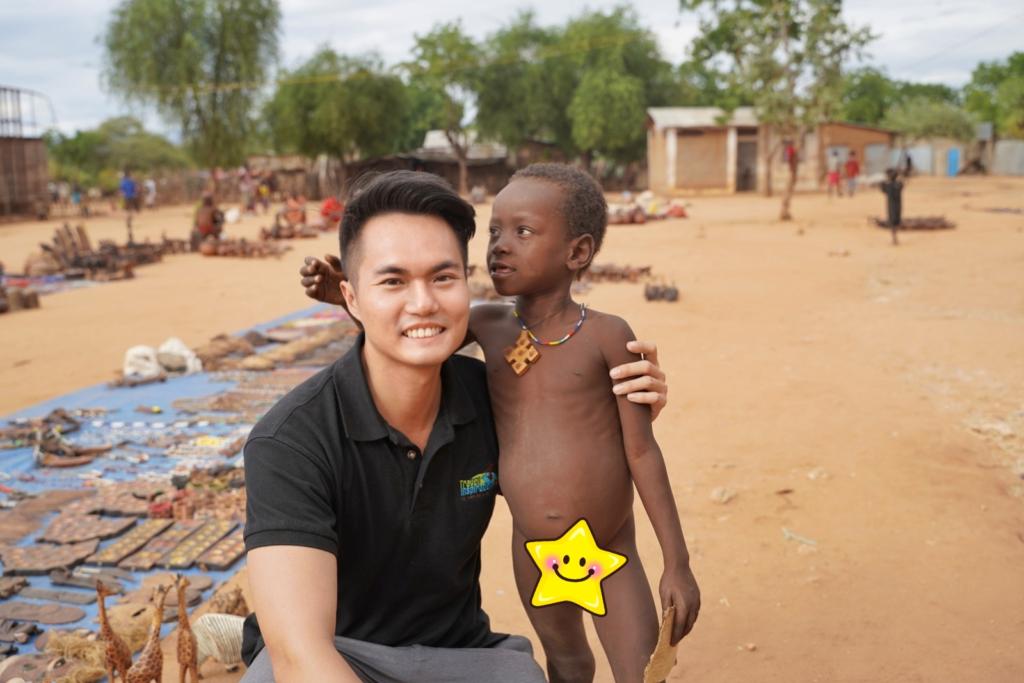
This Hamer Tribe boy was too fascinated with my hair! He was too adorable. I wish I could give him more.
Another sad tradition that is practiced within the Hamer tribe, is that the women are allowed to have sex before marriage to test the unmarried woman’s fertility. Many of them are known to abandon their own innocent babies into the bush, leaving them to die in the wild. The Ethiopian government and some non-government organizations are actively searching for babies in the bush to save these innocent souls. The government tried educating the Hamer tribe to abort such traditions, but it was often ignored due to the superstitious belief that the child born out of wedlock may be cursed and cause epidemics or droughts. 🙁

I was fortunate to had a short interaction with these beautiful Hamer Tribe boys. Pay attention to the boy next to me, he was obviously more interested in my camera man. haha
#4 The Dorze Tribe
Location
The Dorze tribe has an estimated population of 30,000 tribe members living in the villages near the cities of Chencha and Arba Minch, in the Semien Omo Zone of the Southern Nations. The Dorze tribe stretches over a considerably large area from the Omo River banks to the highlands over Lake Abaya. The highlands has an average elevation of 9000 feet to the west of the Rift Valley and the Dorze tribe occupy the Eastern edge about 2600m above sea level. This means that the Dorze tribe’s location is generally cooler temperature and wetter than the other tribes.

The search for Dorze Tribe! My Ethiopian guide was helping me with this shot. First time using my cam, and I kinda like it. The background was in focus instead of me. Somehow, it fits into my story line here. 🙂
Tribe Special Symbolic
Dorze tribe are mountain people and they are famous for building huge huts that resembles an elephant. Although these huts look fragile, they can last up to 60 years. The Dorze tribe huts can also be transported to another location easily, thanks to the structure made of vertical poles. It can also be trimmed shorter and shorter over the years when the termite attacks. 🙂
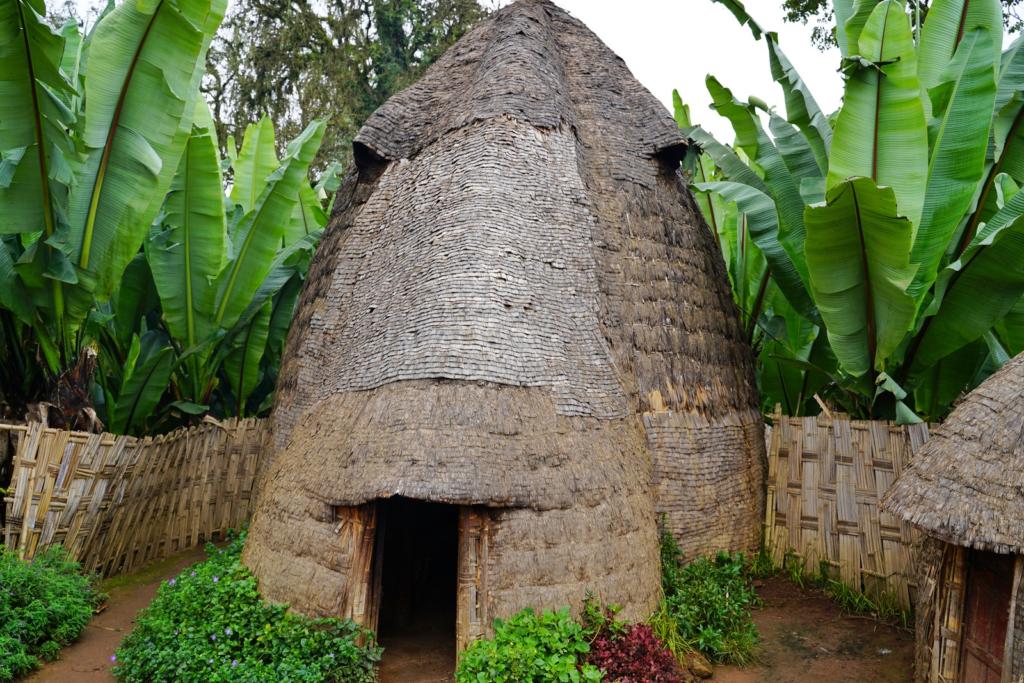
Dorze Tribe Elephant Hut, can you see the elephant head from here?
Every hut is designed to have a “nose of the elephant” facing the south direction, to keep the inside of the hut cool (i.e. no direct sunlight into the hut). It is interesting to note that the Dorze tribe have a reception area for welcoming guest to take a seat near the entrance of the hut so that the visitor can accustom their eyes to the darkness in the hut before entering fully into the hut. Don’t be fool by its exterior, it may look small from the outside, but the interior is surprising large and spacious. The hut encompass a reception area, a living room, 2 to 3 rooms and a space for the cattle to sleep. Yes, the cattle are kept within the hut to prevent theft and sleep with the family.
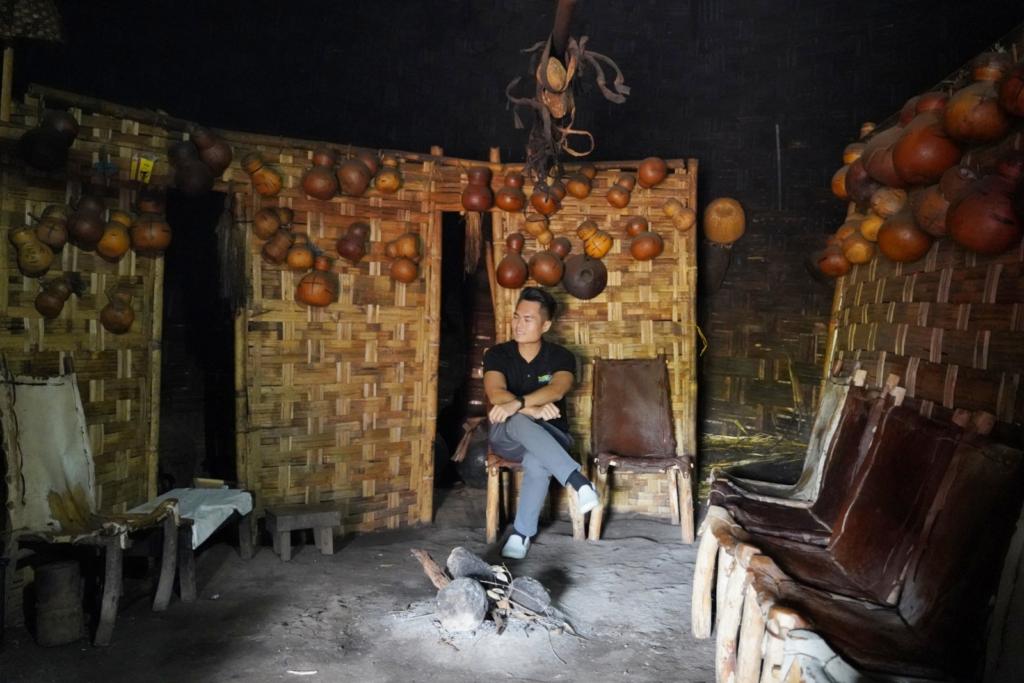
The Interior of the Elephant Hut of Dorze Tribe, seriously, this villa is good for 3 rooms of people + an area for their cattle and goats.
Secret Weapon
Being blessed with an advantageous geographical location high up in the highlands and inherited talents are their secret weapons for survival! The Dorze tribe people engage in small scale farming or subsistence agriculture and keep livestock such as goat, cows and chicken for domestic consumption. The women also prepare Kotcho (an Ethiopian flat bread) out of the trunk of of a tree (the locals call it false banana). The Ethiopians Kotcho made by the Dorze tribe people is highly regarded for its nutritional value and is widely consumed both in towns and countrywide. The Kotcho is prepared with water, bulla (liquid from Ensete ventricosum aka false banana), and cooked over fire and stone. All natural ingredients and it tasted yummy!

Dorze Tribe woman preparing Kotcho
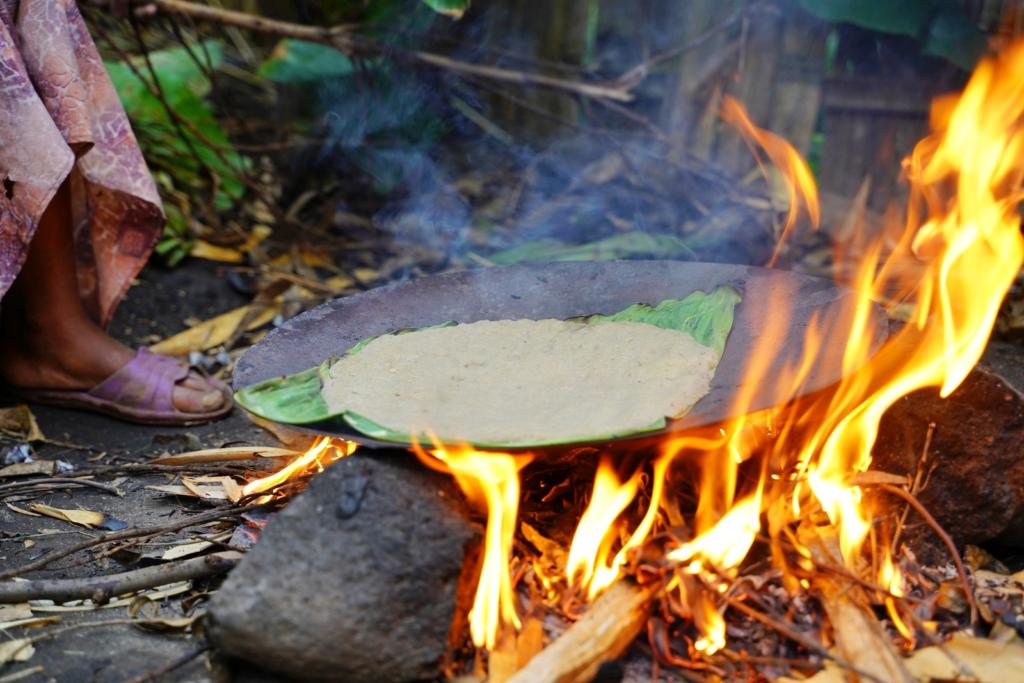
The delicious Kotcho vegetarian and vegan friendly 🙂
The Dorze tribe women are renowned for their hand woven cotton garments known as “Shamma”. They also hand weave heavy blankets called “Bulluko”. A much thinner cotton cloth, is used to tailor dresses for women. Special skills are necessary to design and weave the multicolored intricate edging, called “Tibeb”. Hence, their lives are definitely more advanced than the Mursi, Daasanech and Hamer tribe people in Omo Valley Ethiopia.
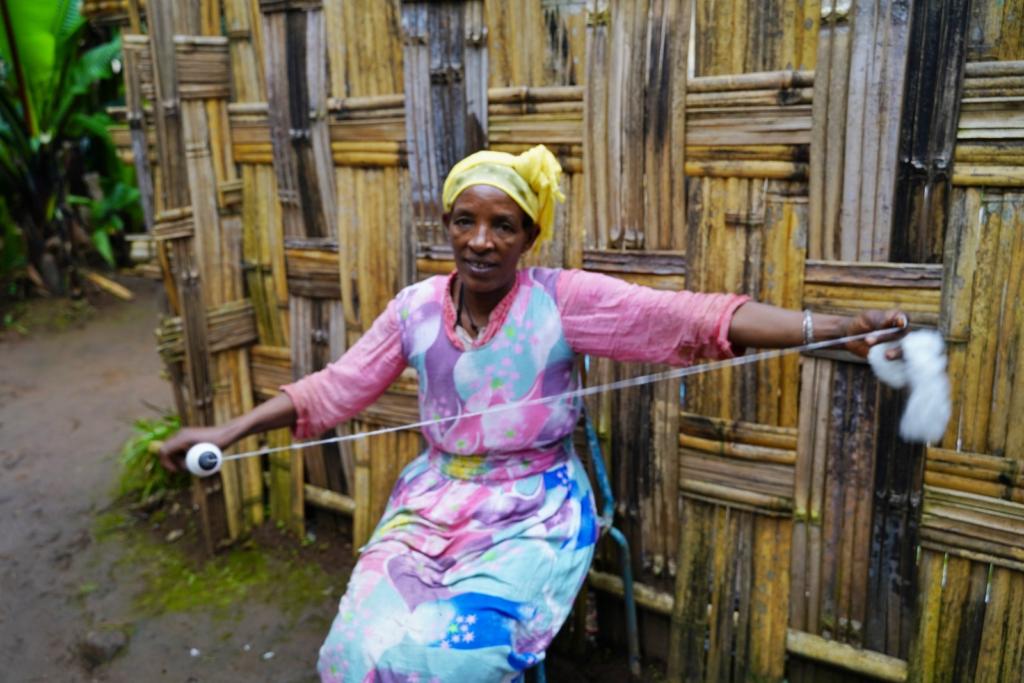
A Dorze tribe lady using Shamma to make clothes.

Cute Dorze Tribe Child With Bulluko, he was just sooooo cute. I was filming the colours of the Bulluko and this boy just smile so beautifully to me. Trust me, it won’t happened in Singapore.
Culture
It was noted during my visit that the Dorze tribe men have a great sense of humour. Historically, they were once warriors but now the Dorze men folk have settled down to do farming or engage in weaving in which has become a unique thing associated with them. Living high in the mountains, blessed with fertile land and natural resources. Undoubtedly, they lead a much better life than the rest of the tribes in Ethiopia, but I witness child labour issues in the Dorze tribe as well.

The beautiful Dorze Tribe, was kinda touched by them.

The Dorze Tribe Men Hospitality, feeding guest with Kotcho before their first bite. I honestly was a bit worried about the eating them, but I had to. it actually taste good. No kidding.
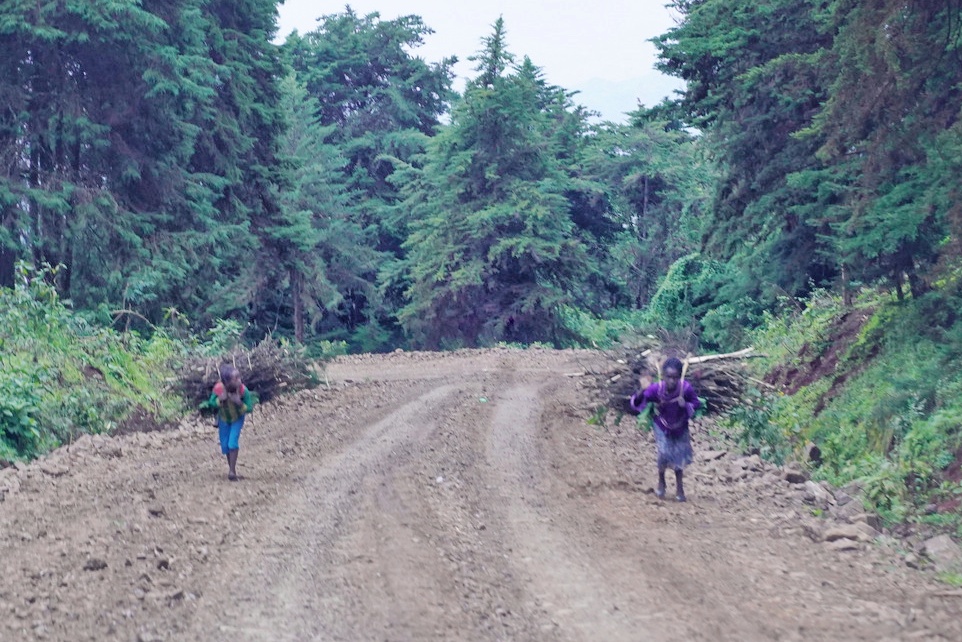
Child labour is still an issue here! Seeing this sight, just makes me sad. 🙁
#5 The Konso Tribe
Location
Konso tribe is the last tribe I’m introducing from the South-Eastern part of Ethiopia and are found near the Sagan river. Similar to the Dorze, the Konso tribe people also lived high up in the mountains with an elevation of 1650 meters high. This site is also a listed as an UNESCO World Heritage site in Ethiopia.

Searching for Konso Tribe
Tribe Special Symbolic
The Landscape where the Konso tribe resides is located on a dry, hilly environment at the edge of the Rift Valley in southern Ethiopia. It has always been an isolated area of the country, where life have remained mostly unchanged for at least 400 years. The extensive dry stone terraces are a testament to the persistent human effort to harness the hard, dry and rocky environment. The man-made terraces are the Konso tribe main unique feature. It is beautiful built and can withstand soil erosion, cleverly collect large volume of water, discharge the excess to have a terraced fields system that can be used for agriculture. The terraces are contoured with the dry stone walls, which is up to 5 meters in height.

First impression of Konso Village
Secret Weapon
One of the reason why the Konso tribe village are listed as UNESCO World Heritage site in Omo Valley Ethiopia is because of their interesting village layout. The tribe is located on the hilltops and split up into smaller communities, with each community having a main hut. When I entered a Konso village, I need to pass through a gate and a series of alleys. These paths are part of it’s security system to protect the tribe members by making it difficult for enemies to access the main hut area where the communities stay.

The Way to Kondo Village, bordering by the high walls

Entering Konso Village
The walled villages called “Paleta” are located on the high hilltops and fortified with high defensible walls. The village are circled by one to six rounds of dry stone defensive walls, built of locally available rock from the nearby mountains. “Daga Hela” is the tradition of building high walled marking stones, quarried, transported and erected through a traditional ritual process, making the Konso tribe one of the last megalithic people (i.e. pre-historic people).

Konso Village High Walls
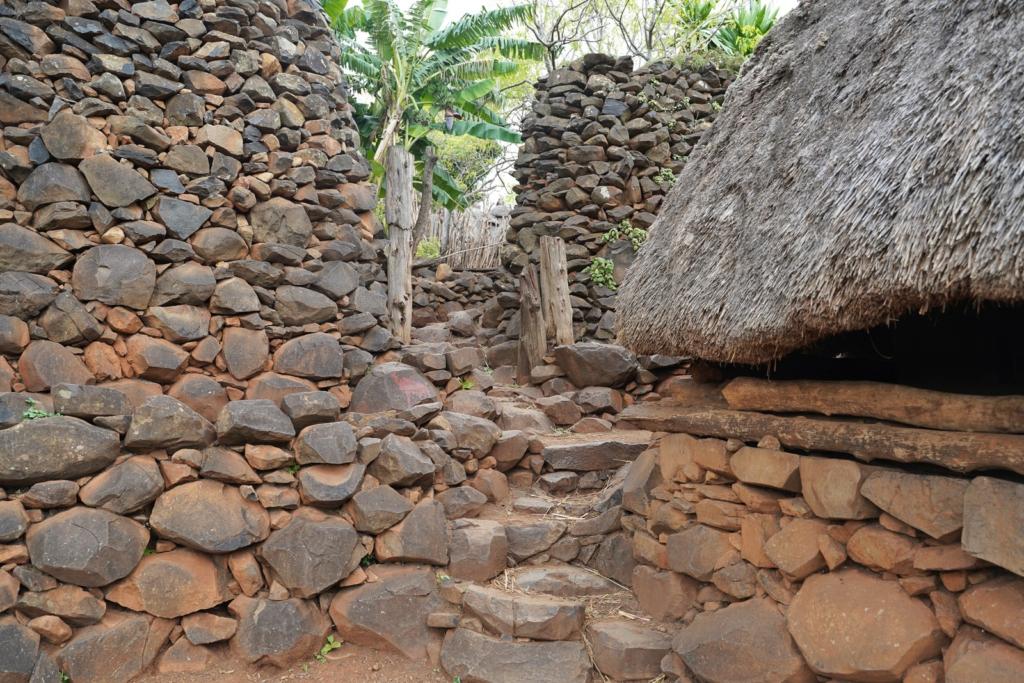
Konso Village Stairs
Culture
Compared to the other tribes, the Konso tribe people tend to be smaller in size and built. One interesting fact about the Konso tribe is that they mark the timeline of their generations. A generation marker tree or pole called the “Olayta” is raised every 18 years, marking the start of a new generation. Therefore the age of a village can be determined by how many poles are standing.

Olayta in the Konso Village
There are cultural spaces inside the Konso walled village, called “Moras”, which an open sitting area. In it, they usually have a one or two-story grass thatched houses, called the Pafta. The Konso tribe men will sleep in the attic of the thatched houses at night to protect the village from various incidence of attacks or fire. While the ground floor of the Mora is meant to be a public area where the men gather to govern the village life, and also a place for recreation.

The Moras in the Konso Village, something like a fort in modern context! 🙂
The Konso Tribe male villagers are super talented, they handmade their own clothes, skirts and pants, and the children made their own toys. On the contrary, I witnessed the girls have a poorer life, doing the hard labours. 🙁

Konso Village Man

Konso Handmade Pants

Konso Handicrafts

Konso Handmade Toys
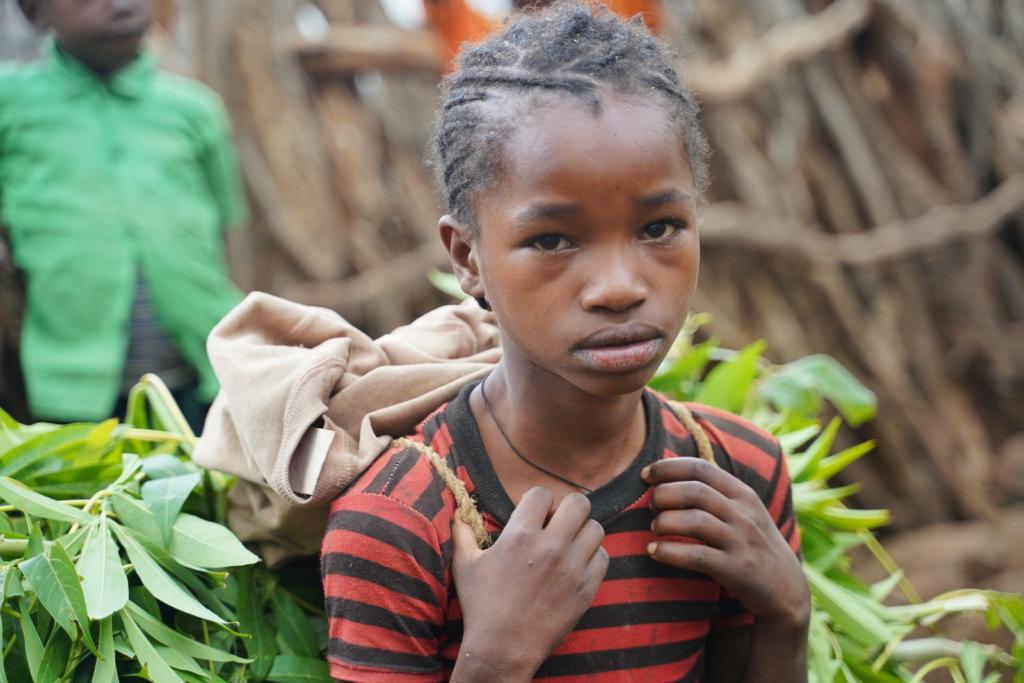
Konso Child Labour
Conclusion
So after reading all my tales of visiting 5 of the Tribes in the Omo Valley, Ethiopia, which is the tribe that fascinates you the most? Which one of the tribe could be the next Black Panther? Please remember to continue to like and share Travel Inspiration 360 stories. 🙂
The more I traveled the more I realized that fear makes strangers of people who should be friends. Your vibe attracts your tribe, so stay positive, what goes around comes around. – Keith Yuen
Where I Booked My Tours From?
While this is NOT a sponsored article! I would like to specially thank all the staff from Witness Ethiopia Tours, especially Mr Ermias, who arranged all my transfers and plan all my visits to the tribes according to my plans and budget. Making this trip a fun and hassle free one!
I would also like to do a shoutout to my lovely guide Mr Dawit Abayenh and my super adorable driver Mr Peter Dimo. Please ask for them if you want to head off to Ethiopia. Dawit is an amazing and lovely guide who made me feel safe throughout my trip. He is also very knowledgeable about everything in Ethiopia! Going out with him is like a friend you have known for a long time and can truly depend on. While Peter is the most skillful driver I have ever seen on all my travels, navigating tough terrain and difficult long drives smoothly and safely! 🙂
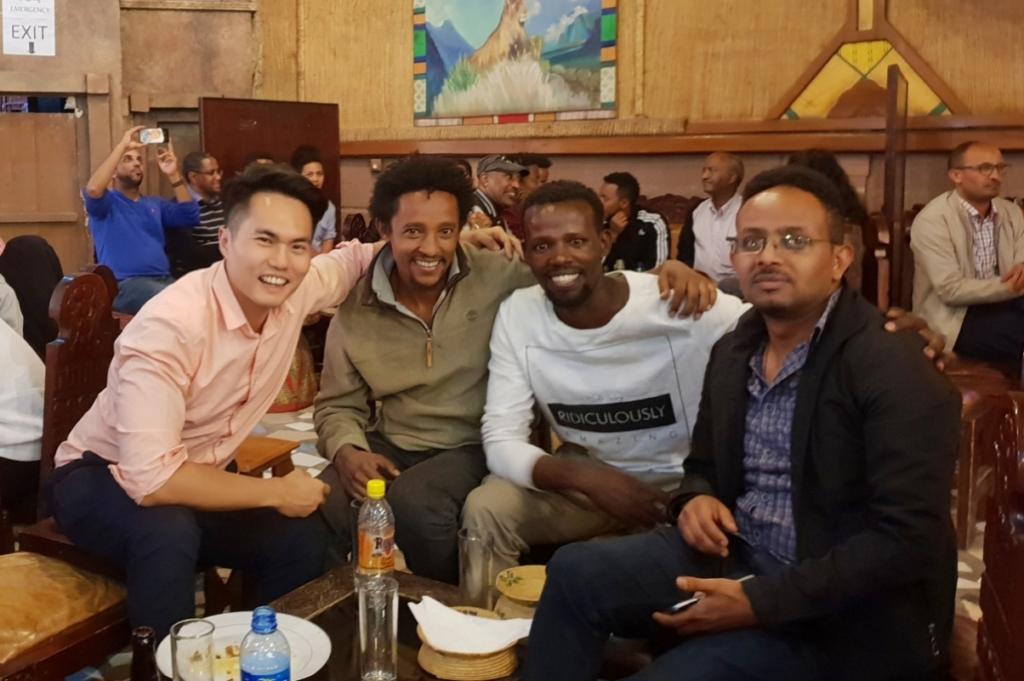
With Witness Ethiopia’s Team
For those who are interested, will leave the contacts below for your easy reference. 🙂
Witness Ethiopia Tours
Address: Down Town Building, 4th Floor, Addis Ababa, Ethiopia
Telephone: +251 911 785789
Email: info@witnessethiopiatours.com
Website: www.witnessethiopiatours.com

6 comments
I love Africa!! This is a very good article to showcase so many tribes that I didnt know.
Nice work! 👍 Enjoy reading and it makes it easy to read with photos and thanks for sharing about Mursi tribes. 🙏
Ps: new to yr insta articles but definitely won’t be my last!
Hey,
What a great post! On your Website.
This is full of useful information I can’t wait to dig deep and start watching the sources you’ve given me about.. Very ingenious.
Hello,
This is nice article about Omo Valley, for more information you can also visit http://www.blackitetour.com or you can contact us with our email: info@blackitetour.com,
We can show you all you need.
Wow thank you for the thorough and honest review. It was very helpful and informative. This is my first time reading your reviews and will continue to read more.
wow! such a nice information, I would like to share this because its very helpful for me. Keep it up!